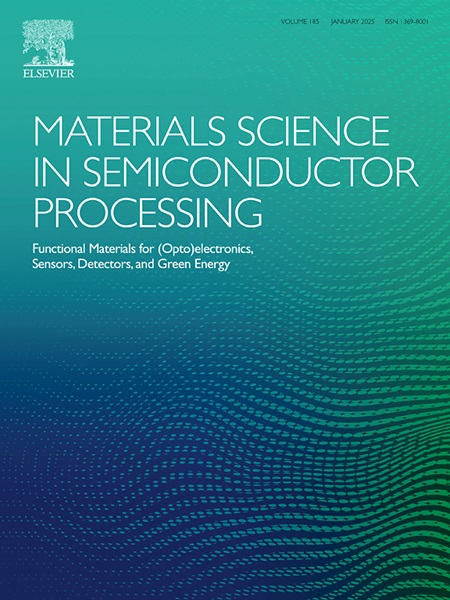3.9 eV高带隙SrSb2O6陶瓷粉的高效摩擦催化水净化
IF 4.2
3区 工程技术
Q2 ENGINEERING, ELECTRICAL & ELECTRONIC
引用次数: 0
摘要
现有的摩擦催化剂大多为窄带隙的半导体材料,不适合研究摩擦催化机理。通过固相反应制备的高带隙SrSb2O6粉末具有明显的摩擦催化染料分解性能,在5.0 mg L−1 Rhodamine B (RhB)染料、1.0 g L−1 SrSb2O6溶液、400 rpm搅拌6 h的条件下,SrSb2O6粉末的最大分解率为91.5%。RhB降解过程符合一级动力学,最大反应速率常数为0.38 h−1。综合实验结果表明,·OH自由基是RhB分解的主要活性物质。从鉴定的中间体中确定了RhB在摩擦催化过程中的分解路线。经过5个循环后,SrSb2O6催化剂对RhB染料保持了良好的摩擦催化性能。本研究为利用高带隙材料的摩擦催化效应进行水净化开辟了新的前景。本文章由计算机程序翻译,如有差异,请以英文原文为准。
Efficiently tribocatalytic water purification of SrSb2O6 ceramic powder with a 3.9 eV high band-gap
Most existing tribocatalysts are semiconductor materials with narrow band-gap, which are unsuitable for investigating the tribocatalytic mechanism. In this work, high band-gap SrSb2O6 powders fabricated via solid-state reaction route exhibited obvious tribocatalytic dye-decomposition performance, with a maximum decomposition ratio of 91.5 % for 5.0 mg L−1 Rhodamine B (RhB) dye, 1.0 g L−1 SrSb2O6 solutions, and stirring for 6 h with a speed of 400 rpm. The RhB degradation process followed first-order kinetics with the maximum reaction rate constant of 0.38 h−1. Comprehensive experimental results indicates that ·OH radicals are the primary active substances for RhB decomposition. The decomposition routes of RhB during tribocatalysis were determined from identified intermediates. The SrSb2O6 catalyst maintained excellent tribocatalytic performance for RhB dyes after five cycles. This study opens up a new perspective about water purification utilizing tribocatalytic effect of high band-gap materials.
求助全文
通过发布文献求助,成功后即可免费获取论文全文。
去求助
来源期刊

Materials Science in Semiconductor Processing
工程技术-材料科学:综合
CiteScore
8.00
自引率
4.90%
发文量
780
审稿时长
42 days
期刊介绍:
Materials Science in Semiconductor Processing provides a unique forum for the discussion of novel processing, applications and theoretical studies of functional materials and devices for (opto)electronics, sensors, detectors, biotechnology and green energy.
Each issue will aim to provide a snapshot of current insights, new achievements, breakthroughs and future trends in such diverse fields as microelectronics, energy conversion and storage, communications, biotechnology, (photo)catalysis, nano- and thin-film technology, hybrid and composite materials, chemical processing, vapor-phase deposition, device fabrication, and modelling, which are the backbone of advanced semiconductor processing and applications.
Coverage will include: advanced lithography for submicron devices; etching and related topics; ion implantation; damage evolution and related issues; plasma and thermal CVD; rapid thermal processing; advanced metallization and interconnect schemes; thin dielectric layers, oxidation; sol-gel processing; chemical bath and (electro)chemical deposition; compound semiconductor processing; new non-oxide materials and their applications; (macro)molecular and hybrid materials; molecular dynamics, ab-initio methods, Monte Carlo, etc.; new materials and processes for discrete and integrated circuits; magnetic materials and spintronics; heterostructures and quantum devices; engineering of the electrical and optical properties of semiconductors; crystal growth mechanisms; reliability, defect density, intrinsic impurities and defects.
 求助内容:
求助内容: 应助结果提醒方式:
应助结果提醒方式:


